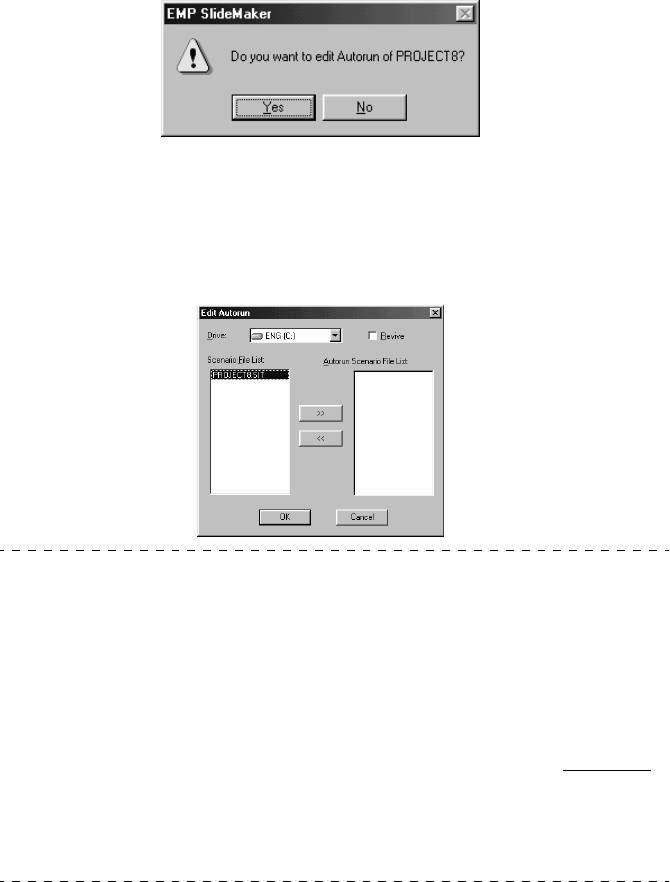
92 - Creating scenarios
5
Click on the [Yes] button.
Click on the [Yes] button and proceed onto the following procedures if the auto-run and
repeat functions are to be set.
Click on [No] if these function do not need to be set. Operations will be ended if [No] is
clicked.
6
Amend the settings and then click on the [OK] button.
When the auto-run parameter is to be set, select the relevant scenario from the box on the
left-hand side, and then click on the [>>] button.
The scenarios specified for auto-run will be displayed in the box on the right-hand side.
When the repeat parameter is to be set, select the relevant scenario from the box on the
left-hand side, and then add a tick to the [Execute Repeat] field.
Click on the [OK] button to terminate operations.
Point
· If memory cards on which scenario files that have been set as auto-run files are inserted
in the projector, the scenario files will be automatically played back when EasyMP func-
tion is started up .
· The auto-run parameter can also be set by selecting [Scenario Operations] - [Edit Auto-
run] after the scenario has been transmitted.
· The auto-run setting cannot be specified from the projector.
· When two or more files have been specified with the auto-run setting, they will be exe-
cuted in the order in which they were registered in the auto-run scenario file list.
· It is possible to transmit created scenarios directly to a memory card inserted in the pro-
jector when the computer and projector are connected with a USB cable. (see page 93
)
· The scenario file will be saved under the name of [scenario-name.sit] on the memory card
when it is transmitted to the projector. These [.sit] files cannot be edited with the com-
puter's SlideMaker.
· Images for projection purposes will be saved in the scenario folder as jpg files (images
files) and jps files (thumbnails).
